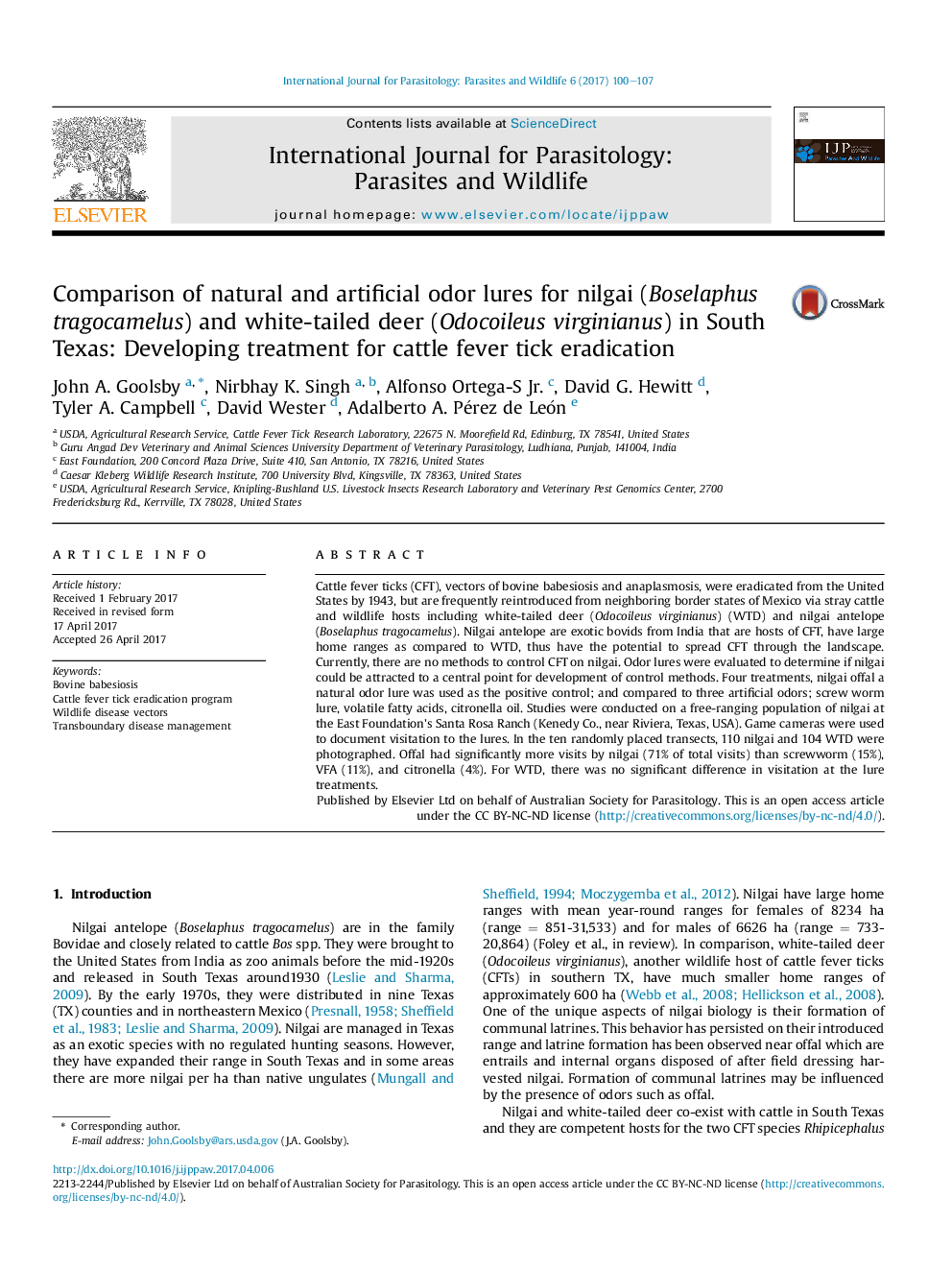| کد مقاله | کد نشریه | سال انتشار | مقاله انگلیسی | نسخه تمام متن |
|---|---|---|---|---|
| 5517927 | 1401040 | 2017 | 8 صفحه PDF | دانلود رایگان |

- White-tailed deer (Odocoileus virginianus) and nilgai antelope (Boselaphus tragocamelus) are hosts of cattle fever ticks.
- Natural and artificial lures were tested in Texas, USA to use in development of cattle fever tick treatment system for nilgai and deer.
- Natural nilgai offal performed best, although the artificial offal mimic - screwworm lure shows promise.
Cattle fever ticks (CFT), vectors of bovine babesiosis and anaplasmosis, were eradicated from the United States by 1943, but are frequently reintroduced from neighboring border states of Mexico via stray cattle and wildlife hosts including white-tailed deer (Odocoileus virginianus) (WTD) and nilgai antelope (Boselaphus tragocamelus). Nilgai antelope are exotic bovids from India that are hosts of CFT, have large home ranges as compared to WTD, thus have the potential to spread CFT through the landscape. Currently, there are no methods to control CFT on nilgai. Odor lures were evaluated to determine if nilgai could be attracted to a central point for development of control methods. Four treatments, nilgai offal a natural odor lure was used as the positive control; and compared to three artificial odors; screw worm lure, volatile fatty acids, citronella oil. Studies were conducted on a free-ranging population of nilgai at the East Foundation's Santa Rosa Ranch (Kenedy Co., near Riviera, Texas, USA). Game cameras were used to document visitation to the lures. In the ten randomly placed transects, 110 nilgai and 104 WTD were photographed. Offal had significantly more visits by nilgai (71% of total visits) than screwworm (15%), VFA (11%), and citronella (4%). For WTD, there was no significant difference in visitation at the lure treatments.
Attract Nilgai &Treat TicksNilgai are attracted to offal. These gathering points may allow for treatment of nilgai with biological controls such as Metarhizium/Beaveria fungus or entomopathogenic nematodes. Methods for treatment are under development and need to be compatible for use in wildlife refuges and South Texas rangelands. Treatment of cattle fever ticks on nilgai will help mitigate the impact of this exotic mammal species in the pathogenic landscape and safeguard livestock production.432
Journal: International Journal for Parasitology: Parasites and Wildlife - Volume 6, Issue 2, August 2017, Pages 100-107